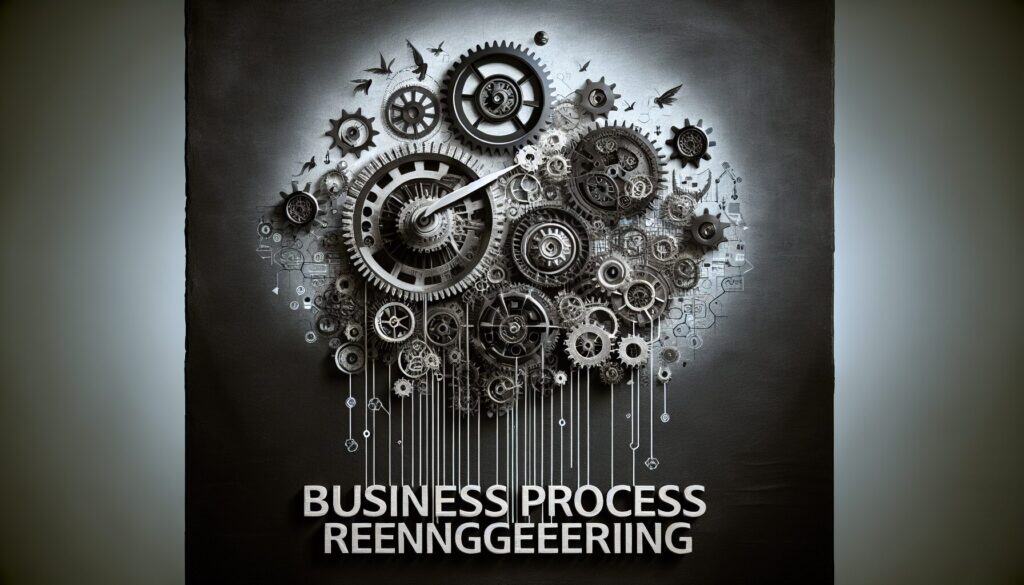A management approach aiming for radical redesign of core business processes to achieve dramatic improvements in productivity, cycle times, and quality.
- Methodologies: Engineering, Quality
Hammer and Champy Reengineering (Business Process Reengineering – BPR)

Hammer and Champy Reengineering (Business Process Reengineering – BPR)
- Business Process Reengineering (BPR), Change Management, Continuous Improvement, Innovation, Lean Manufacturing, Process Improvement, Process Optimization, Quality Management, Value Stream Mapping
Objective:
How it’s used:
- Involves fundamentally rethinking and redesigning how work is done, often leveraging information technology, to achieve breakthroughs in performance rather than incremental improvements.
Pros
- Can lead to significant improvements in efficiency, cost reduction, and customer satisfaction; encourages radical innovation and challenges existing assumptions.
Cons
- High risk of failure; can be disruptive to the organization and employee morale; requires strong top-management leadership and significant investment; often involves job cuts.
Categories:
- Project Management, Quality
Best for:
- Achieving radical improvements in business performance by fundamentally redesigning core business processes.
Hammer and Champy’s Business Process Reengineering (BPR) methodology is particularly relevant in industries undergoing digital transformation, such as manufacturing, healthcare, and retail. It is commonly applied during project phases that involve substantial changes to workflows or the integration of new technologies. Organizations often initiate BPR when seeking to address declining performance metrics or escalating operational costs, typically requiring participation from cross-functional teams that include stakeholders from various departments such as IT, finance, and operations to ensure a comprehensive approach. For instance, a manufacturing firm may implement BPR to overhaul its supply chain processes by leveraging advanced data analytics for better inventory management, allowing for real-time decision-making and improved production schedules. Such initiatives encourage teams to question existing practices and remove unnecessary steps, thereby driving innovation. Successful reengineering efforts can result in not just enhanced efficiency but also a transformation in how companies engage with their customers, ultimately leading to elevated satisfaction levels as services become faster and more reliable. Companies that have implemented this approach often report not just financial gains, but also a cultural shift towards embracing change and continuous improvement within the workforce. The collaborative nature of BPR promotes knowledge sharing among employees, fostering an environment where innovative solutions can emerge to solve pressing operational challenges.
Key steps of this methodology
- Identify the existing processes that need reengineering.
- Analyze and challenge the assumptions underlying the current processes.
- Define the objectives and goals for the redesigned processes.
- Develop new process designs that leverage technology and innovation.
- Implement the redesigned processes across the organization.
- Measure the performance of the new processes against the established objectives.
- Continuously refine and improve the processes based on feedback and performance data.
Pro Tips
- Conduct a deep analysis of existing processes to uncover hidden inefficiencies and redundancies before initiating redesign efforts.
- Incorporate cross-functional teams in the reengineering process to ensure diverse viewpoints and expertise are utilized.
- Implement a phased approach for technology integration to allow for iterative feedback and minimize disruption during the transition.
To read and compare several methodologies, we recommend the
> Extensive Methodologies Repository <
together with the 400+ other methodologies.
Your comments on this methodology or additional info are welcome on the comment section below ↓ , so as any engineering-related ideas or links.
Historical Context
1960
1980
1983
1990
1995
2000
2010
1950
1980
1980
1986
1994
1995
2000
(if date is unknown or not relevant, e.g. "fluid mechanics", a rounded estimation of its notable emergence is provided)














Related Posts
METS to Calories Calculator
Meta-Analysis
Message Mapping
Mental Model Diagrams
Maximum Acceptable Pushing and Pulling Forces
Material Requirements Planning (MRP)